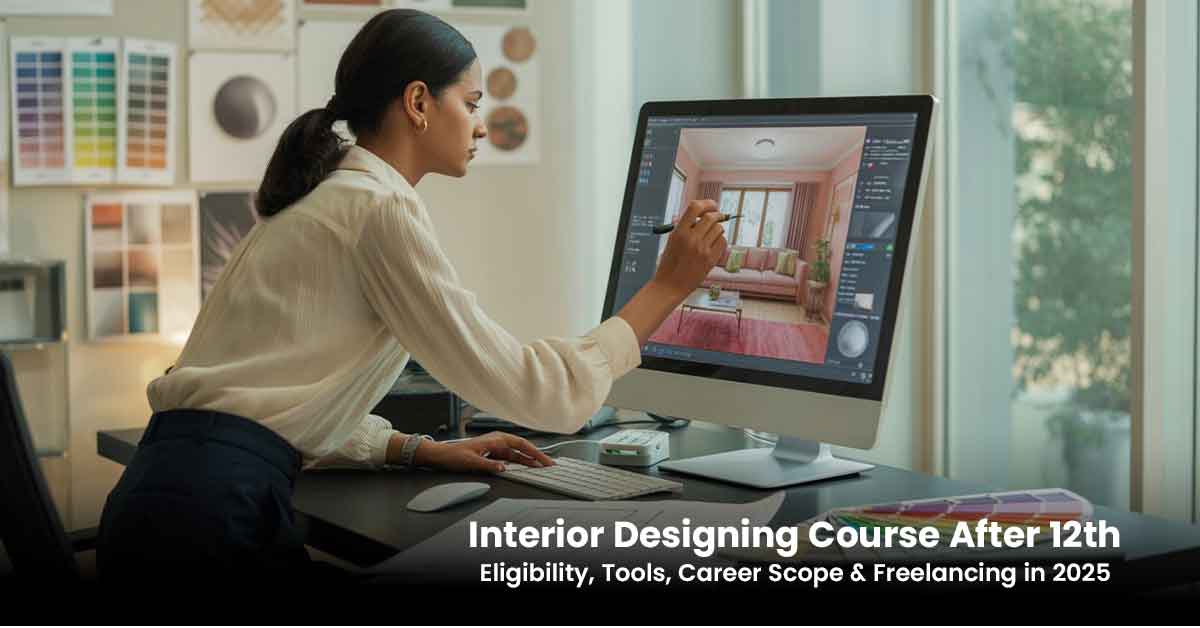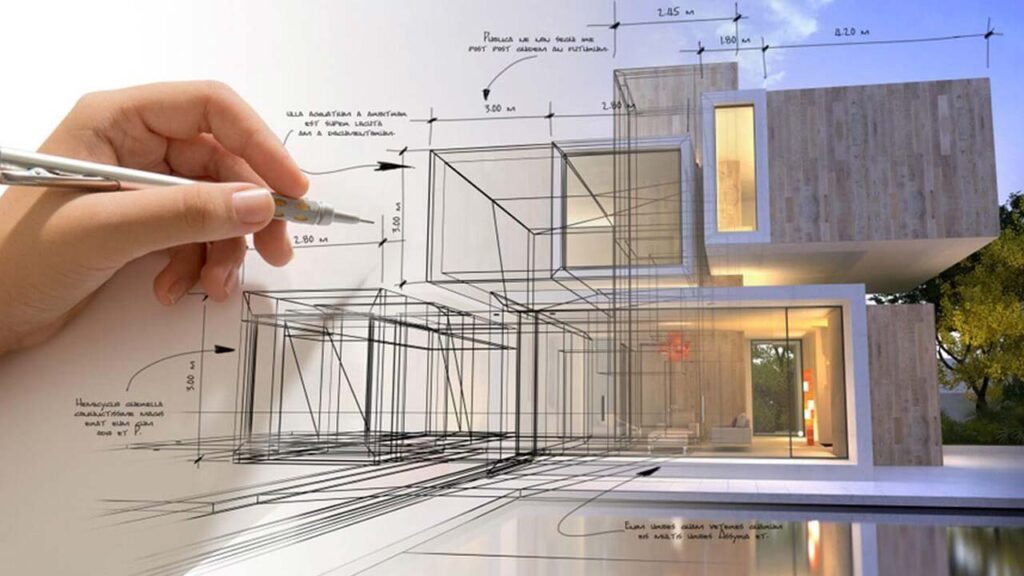
Interior Designing Course After 12th – Eligibility, Tools, Career Scope & Freelancing in 2025 | OVS Learning
Many students get confused after 12th. Arts? Commerce? Or something creative like designing?
I was the same. Lost. One day I heard someone mention “Interior Designing Course after 12th.” It sounded fancy. I googled it, read random blogs, but still had questions.
What is it? Can I do it without knowing drawing? Is it only for rich city folks?
That’s where my story started. With doubt. But it changed everything.
It was a regular Sunday. I visited a friend’s new apartment in a high-rise township of Jaipur. The building was modern, but the inside? Flat white walls. Plastic chairs. No warmth. No identity.
But two weeks later, I returned. The same space now looked like a magazine cover—soft pastel lighting, cozy textures, floating bookshelves, smart kitchen layout, and art that made you pause. All thanks to one person:
An interior designer.
That’s when it hit me—interior designers don’t just design spaces. They design lifestyles in 2025.
Today, homeowners want more than just four walls. Restaurants need Instagram-worthy aesthetics. Offices must balance creativity and productivity. And that’s why skilled interior designers are more in demand than ever before.
If you’re a student who has just passed 12th and wondering what to do next, and if you love creativity, design, and turning blank spaces into magic—interior designing is your perfect path.
Let’s break it all down in this 2500+ word guide—from eligibility to career, freelancing, and where to learn it all.

🎓 Eligibility for Interior Designing Course After 12th
One of the best parts? You don’t need to be from a specific stream.
Whether you’re from Arts, Commerce, or Science—you can join an interior design course right after Class 12th.
Basic Eligibility:
- Passed 10+2 from any recognized board (CBSE, ICSE, State Board)
- Minimum 45-50% marks (may vary by institute)
- Passion for design, drawing, creativity, and spatial understanding
No entrance exams for most diploma or certification courses. Just walk in with your creative spark.
⚒️ Tools You’ll Learn in Interior Design
A modern interior designer is both an artist and a technician. You won’t just sketch with pencil and paper—you’ll master digital tools that are used by professionals across the globe.
Top Tools You’ll Learn:
- AutoCAD – For floor plans and technical drawings
- SketchUp – For quick 3D modeling
- 3ds Max with V-Ray – High-quality 3D visualization and rendering
- Photoshop – Mood boards, presentations, edits, social media post
- Illustrator – logo design and vector/character design
- Revit – For BIM (Building Information Modeling)
- Lumion – Real-time rendering of interiors/exteriors
- MS Excel & PowerPoint – Project estimation and client presentations
By the end of your course, you’ll be able to create:
- Floor plans
- 3D walkthroughs
- Realistic visualizations
- Presentations and proposals

What is Your Job Profile After Completing the Interior Designing Course?
Some one start as interior designers for homes or offices. Some love 3D software and work as visualizers—creating those wow! walkthroughs. A few get into site execution, making sure everything on-site matches the plan. Others go solo—take up local projects as freelancers, work from home, or collab with builders. You could even design furniture, do space planning, or just offer 3D design services online. Basically—once you learn the tools and skills, the job path depends on what excites you the most. And trust me, there’s room for everyone.
1. Interior Designer (Residential/Commercial)
- Plan room layouts
- Choose color palettes, lighting, and furniture
- Present 3D views to clients
- Supervise execution at site
2. 3D Interior Visualizer
- Convert interior plans into 3D visuals
- Use software like 3ds Max, SketchUp, V-Ray
- Work with architects and designers to visualize their ideas
3. Space Planner
- Optimize spaces for functionality and movement
- Plan for lighting, ventilation, utility areas
4. Freelance Interior Designer
- Take up projects independently
- Meet clients, pitch ideas, offer 2D/3D design services
- Manage execution with local vendors
5. Furniture Designer
- Design custom furniture as per interior themes
- Work with carpenters and furniture manufacturers
6. Site Supervisor/Interior Execution Manager
- Handle on-site coordination
- Ensure design implementation matches plan
- Coordinate with electricians, plumbers, masons
Each of these roles requires a mix of technical knowledge, creative flair, and client communication.

💼 Career Scope After Interior Designing Course
Interior designing isn’t just a hobby course anymore. It’s a booming career in India and abroad.
📊 Industry Growth:
According to IMARC Group, India’s interior design market is expected to reach ₷75,000 crore by 2030, growing at 7.8% CAGR.
From residential buildings to corporate offices, retail stores to hospitals—everyone needs an interior designer.
🏡 Job Profiles You Can Work As:
- Residential Interior Designer
- Commercial Designer
- Kitchen/Bathroom Specialist
- Set Designer (TV/Film)
- Exhibition Space Designer
- Lighting & Furniture Designer
🚀 Future Career Paths:
- Sustainable Design Consultant
- Smart Home Planner
- 3D Interior Visualizer
- AR/VR Experience Designer
- Freelance Consultant
📈 Average Salary:
| Role | Salary (India, 2025) |
|---|---|
| Junior Interior Designer | ₹20,000 to ₹40,000/month |
| 3D Visualizer | ₹35,000 to ₹60,000/month |
| Freelance Designer | ₹50,000 to ₹1.5 lakh/month |
| Senior Designer/Team Lead | ₹1.5 to ₹3 lakh/month |

🔍 Why Learn 3D Interior Designing?
Gone are the days of just sketching layouts.
Today’s clients want to “see” how their space will look—even before a single brick is laid. That’s where 3D interior design plays a key role.
Benefits of 3D Interior Design:
- Shows the client exactly what to expect
- Speeds up decision-making
- Saves cost & rework
- Adds professionalism to your service
If you want to grow as a modern interior designer—learning 3D is not optional. It’s essential.
🌐 Freelancing or Jobs: What After the Course?
You’ve completed the course. Now what?
💼 Job Opportunities:
You can apply to:
- Interior design studios
- Architecture firms
- Real estate companies
- Modular furniture brands
- Retail chains
🤝 Freelancing Career:
Start your own brand. Offer services like:
- Design consultation
- 2D & 3D layouts
- Furniture arrangement
- Theme-based décor (Boho, Minimalist, Classic)
Start on platforms like Fiverr, Upwork, Freelancer, or even Instagram!
Real Talk: Many designers earn more freelancing than in full-time jobs. All you need is a laptop, a stunning portfolio, and a client-first attitude.
🎓 Where to Learn Interior Designing?
If you’re in Rajasthan (or even anywhere in India)—you don’t need to look far.
Learn Interior Design at OVS Learning
OVS Learning is Rajasthan’s top-rated multimedia and design institute. With 15+ years of experience, real project-based learning, and personalized mentorship—it’s where talent becomes profession.
Why Choose OVS?
- Industry expert trainers
- Studio-like training environment
- Tools like AutoCAD, 3ds Max, SketchUp, etc.
- Internship + Placement Support
- Freelance guidance
- Offline classes in Ajmer
📞 Call: +91-9116677034
📲 Website: www.ovslearning.com

🧰 FAQs: Interior Designing Course After 12th
1. Can I do interior designing after 12th Arts?
Yes, you can! Students from any stream can apply.
2. Do I need to know drawing?
Basic sketching helps, but digital tools do most of the heavy lifting.
3. How long is the course?
Anywhere between 6 months to 1 year, depending on course type.
4. What if I’m not good at math?
That’s okay. Interior design is more about creativity than calculations.
5. Can I start freelancing right after the course?
Yes! With a good portfolio, you can offer design services from home.
6. How much can I earn as a beginner?
Freshers start at ₹20,000–₹30,000/month. Freelancers can earn more.
7. Is interior designing in demand?
Very much. Especially in urban cities and the real estate boom.
8. Can I learn online?
Basic courses are available online, but hands-on training is best offline.
9. What software do I need?
AutoCAD, 3ds Max, SketchUp, Photoshop are must-haves.
10. Is interior designing a stable career?
Yes. Design is a forever industry—as long as spaces exist, design will thrive.
Tag:career in interior designing, career in interior designing after 12th, how to become an interior designer, interior design, interior design course, interior design course online, interior design courses, interior design courses after 12th, interior design courses after 12th commerce, interior design courses in india after 12th, interior designer, interior designing, interior designing after 12th, interior designing course, interior designing course after 12th



